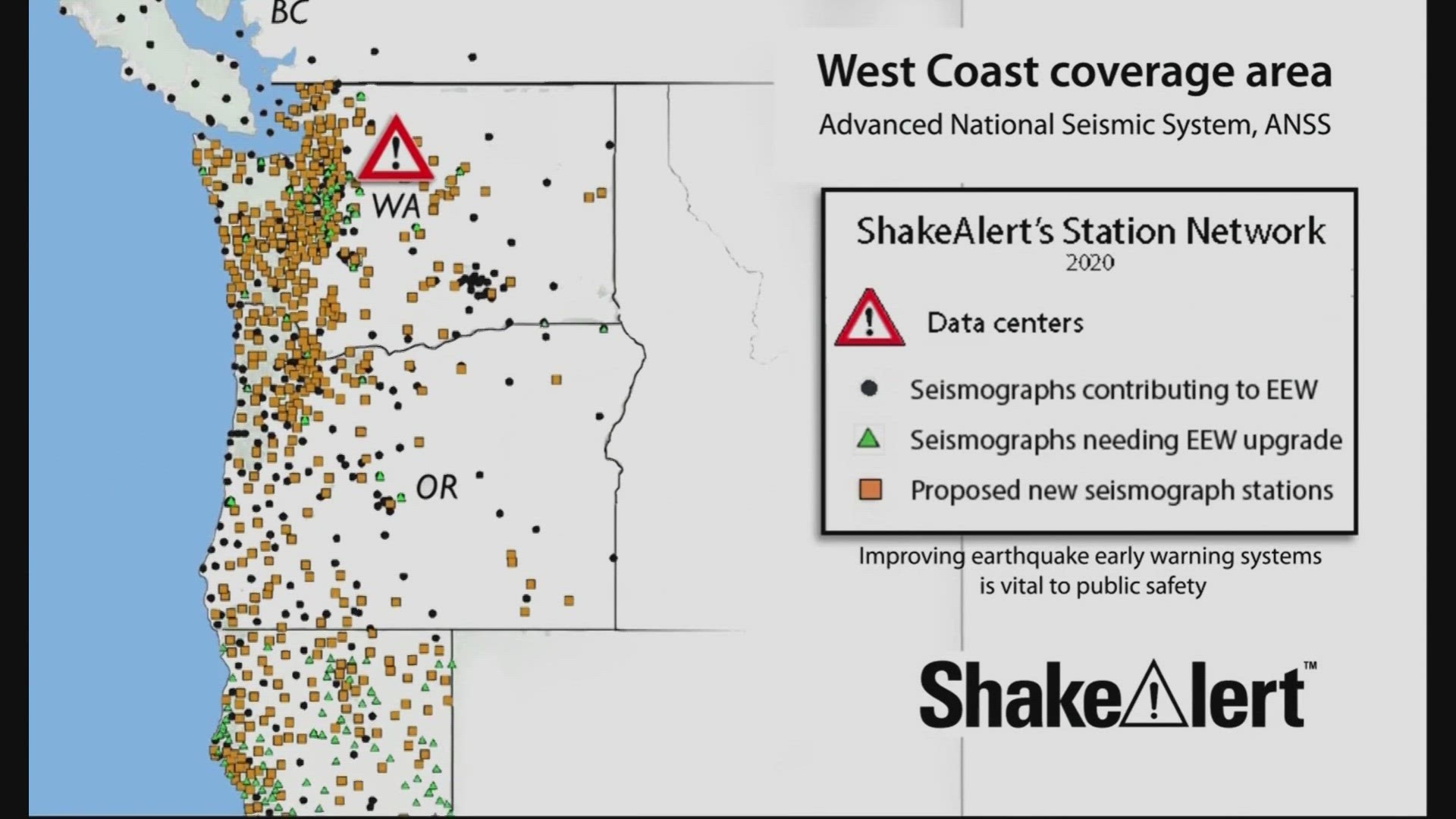PORTLAND, Ore. —
If a major earthquake were to strike today, do you have a plan?
If you have your phone set up to receive ShakeAlert warnings, you might just have an few extra moments to put that plan into action before the ground starts to move.
The ShakeAlert system went live in Oregon on March 11, 2021, a decade after a devastating quake rocked Japan.
“ShakeAlert arrived in Oregon 10 years to the date of the devastating 2011 Tōhoku earthquake and tsunami in Japan, which was a wake-up call for those of us on the West Coast facing the looming threat of a Cascadia Subduction Zone earthquake,” said Oregon Department of Emergency Management Director Erin McMahon. “ShakeAlert is a lifesaving tool that can offer critical seconds of warning before we feel the impacts of an earthquake, alerting people to protect themselves.”
To be clear, ShakeAlert is not an earthquake prediction system. Instead, it uses a network of more than 200 seismic monitoring stations, deployed at strategic locations across Oregon, to detect quakes as they start and relay warnings to residents, government agencies and institutions before the shaking starts.
The system, which is run by the Pacific Northwest Seismic Network and the U.S. Geological Survey, has already proved effective, said Leland O’Driscoll, associate director of the Oregon Hazards Lab at the University of Oregon.
“The biggest one was in the Ferndale, Northern California area,” he said, referring to a large quake in December of 2022 near the Oregon/California border. “That was such a large earthquake, nearly magnitude 7, that folks in the in Brookings and Gold Beach and through the Medford area got upwards of 60 seconds of warning.”
O’Driscoll said that kind of warning can give residents time to “drop, cover and hold on.”
But that kind of warning has other, more far-reaching, benefits as well. It can give hospitals time to switch over to generators so care to patients isn’t interrupted by power outages. It can give train operators time to stop and potentially avoid derailments. That early warning window can also give utilities time to power down their systems.
“The city of Lake Oswego, they have wastewater and water plant controls that will immediately allow for safeguards that preserve infrastructure and allow for more expedient recovery,” O’Driscoll said.
Of course, you’ll only get those alerts if your phone is set up to receive them. Many phones have the alerts enabled by default, but it’s worth checking to make sure.
For most operating systems, including iPhones and Androids, you can navigate to your Settings, then Notifications, then scroll down to Emergency Alerts. There should be an option to enable the alerts.
If you want to go a slightly fancier route, there are standalone apps, like the MyShake app, that are free to download.
O’Driscoll stressed that early warnings are only one aspect of earthquake preparedness, though. The last time a major quake struck along the Cascadia Subduction Zone, which is capable of producing temblors as strong as the Tōhoku quake, was just over 300 years ago.
The zone has produced strong earthquakes at least seven times over the last 3,500 years — so it’s a matter of when, not if, the next one hits.
Experts recommend having an earthquake kit stocked with enough food and water, along with any medications, for two weeks.

